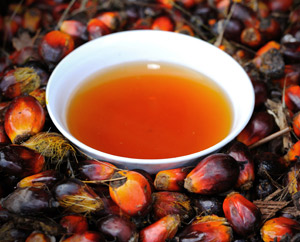Gluten Free
What does following a gluten-free diet mean? That you're embarking on an easy diet with a wide range of health-promoting effects. Instead of dwelling on what you’re giving up, consider that you’re going to enjoy a whole new world of delicious food options to meet your special dietary needs. You’ll be eating seasonally, choosing more fresh fruits and vegetables, focusing on meats, seafood, poultry, legumes, lentils, corn, and rice, and discovering fascinating ancient grains such as quinoa, amaranth, and millet. You’ll be able to eat potatoes, eggs, most cheeses, even chocolate (!)—and enjoy them without guilt because you’ll be taking good care of your body. In fact, you’ll probably end up eating—and feeling—better than ever!
Visit this page for more information about living Gluten Free
---
We carry a large variety of gluten free items, the brands listed below represent just some of the offerings we carry















More Diets

Related Topics
- By Suzanne Dixon, MPH, MS, RD
Reading Up on Red Palm Oil
Red palm oil has captured a lot of attention lately. But does the truth support the buzz? While its brilliant color does impart some unique properties, more research is needed to support specific health claims. In the meantime, this will help you sort fact from fiction.
This oil is a good source of beta-carotene, and a type of vitamin E known as tocotrienols
What it is
Red palm oil is the unrefined version of regular, refined palm oil—a fat found mainly in the processed foods many people eat every day, such as crackers, chips, microwaveable meals, fast food, cookies, and cakes.
Named for its bright color, it may also be referred to as virgin palm oil, crude palm oil, palm fruit oil, or palm kernel oil. Once red palm oil has been refined into regular palm oil, the bright red color, along with many of its potential health-promoting properties, has been removed.
In its unrefined form, this oil is a good source of beta-carotene, and a type of vitamin E known as tocotrienols. Red palm oil doesn’t contain vitamin A, though our bodies can use beta-carotene in the oil to make vitamin A. Much of the fat found in red palm oil is of the saturated variety, which gives it a fatty acid profile similar to coconut oil.
What it does
Many of the health claims about red palm oil are based solely on cell and animal research. These include potential cancer prevention, reducing risk of heart attacks, strengthening bones, dampening inflammation, lowering blood pressure, warding off malaria, and spurring weight loss. There are very few controlled human studies on red palm oil, so we don’t yet know if these claims will hold up for people.
Heart disease
On the positive side, red palm oil has antioxidant properties, and appears to reduce levels of a protein linked with blood clotting, and this ability suggests it may lower risk of heart attacks and stroke. However, the few human trials on red palm oil that have been published suggest this fat may increase levels of total, and LDL, or “bad” cholesterol, neither of which is likely to benefit health or reduce heart disease risk. Only long-term, controlled trials in humans can prove—or disprove—these claims.
Other health claims
To date, there aren’t any human studies to support the other health claims listed above, and human research on red palm oil does not support claims of an anti-inflammatory effect.
As the research on this intriguing substance continues to accumulate, we will gain a clearer picture of exactly what red palm oil can and can’t do for human health.
The take-home message
In the end, we are left with an incomplete picture about red palm oil’s potential health benefits. However, some key points about this newly popular product can help you make the best decisions for your health:
- Factor in fat. Refined palm oil is found in many of the processed foods we eat, and most people already get plenty of this fat in their diet. And while red palm oil does contain beta-carotene, it has exactly the same types of fat as regular, refined palm oil.
- Count calories. When considering the health benefits of red palm oil, remember that this is still a fat. At 9 calories per gram, fat packs more than twice the caloric punch as carbs and protein, which provide just 4 calories per gram.
- Diversify your sources. Red palm oil is a rich source of beta-carotene, but not the optimal source. Brightly colored orange, red, and dark green leafy foods are better choices for beta-carotene and other carotenes too. They come without the burden of copious calories, and the saturated fat that may raise cholesterol levels.
- Eat your E. Red palm oil is loaded with a healthful type of vitamin E called tocotrienols. So are rice bran, wheat germ, barley, oats, nuts, and seeds, and since they don’t come with the negative effect of raising cholesterol, they make better choices. A tocotrienol supplement is another option.
- Weigh pros and cons. Red palm oil can add antioxidants to the diet and may lessen blood clotting in the body, both of which are likely to be positive for health. However, it contains saturated fat, and at least one study has suggested red palm oil can raise levels of total and LDL cholesterol.
- Talk to a pro. If you want to add red palm oil into your diet, ask your doctor or dietitian for advice on how much to use, and what type of product is right for you. And if you try red palm oil, continue to get your cholesterol checked at your annual physical, to make sure this product isn’t having a negative effect on your heart health.











